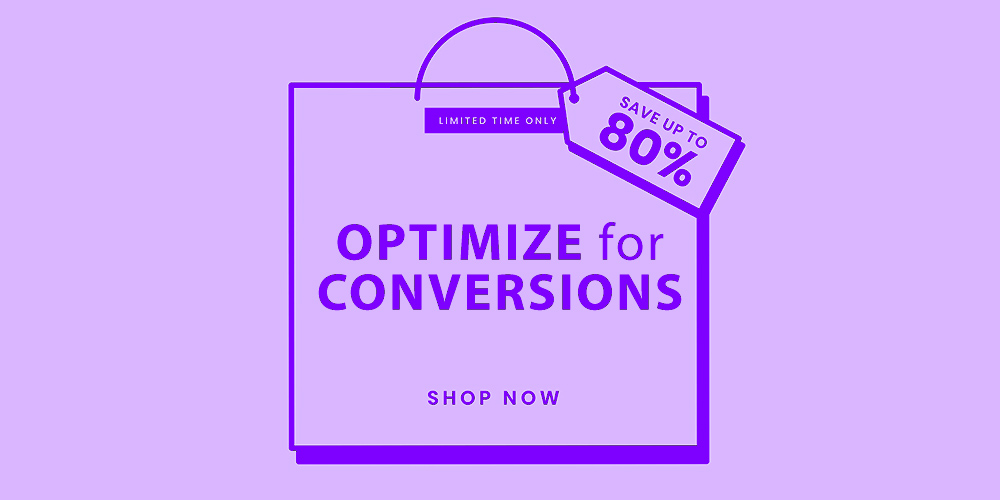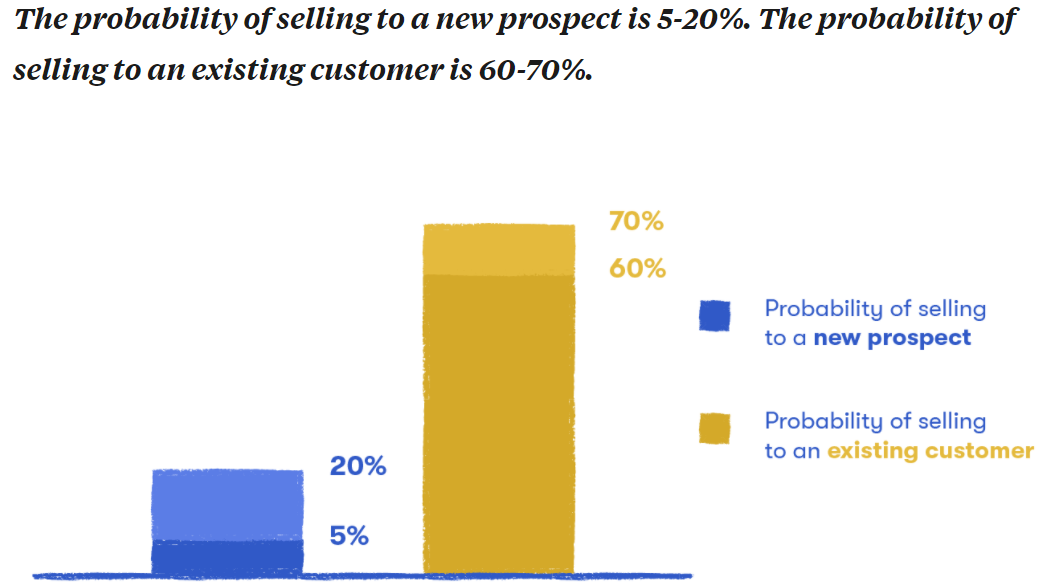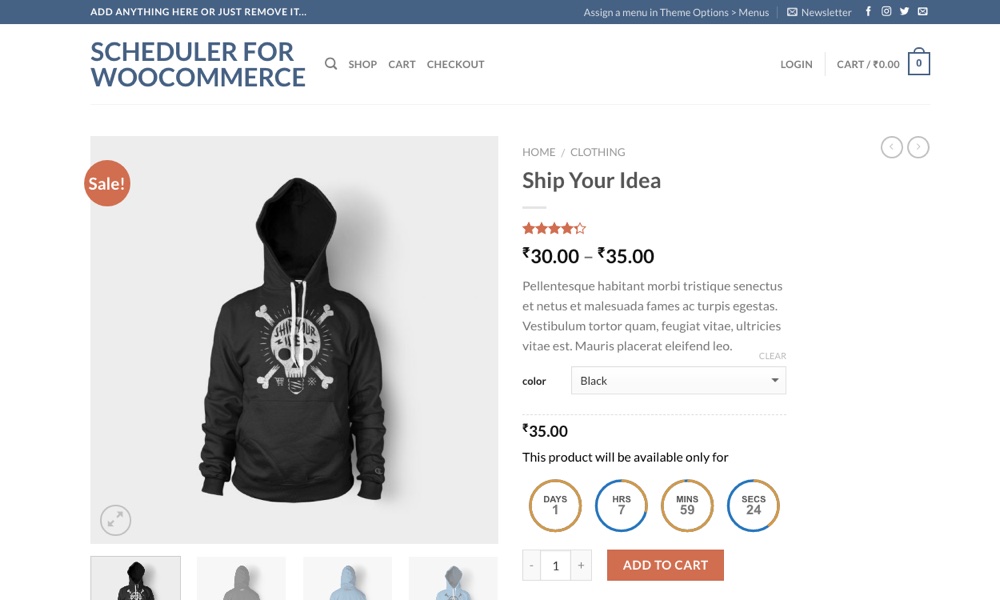7 Ways to Optimize WooCommerce Conversion Rates

eCommerce is a very competitive space. Brands are literally fighting it out to provide the best possible UX to their visitors in order to beat the competition. Combine that with the heightened expectations of modern consumers (50% won’t wait longer than 3 seconds before abandoning a poorly-designed e-commerce site) and you’ll understand why it’s vital to optimize your e-commerce site.
How can you do that? Just follow the optimization tips mentioned below! But first, let’s discuss the ideal conversion rate for e-commerce sites so that you know what to strive for.
What Is a Good Conversion Rate for eCommerce Sites?
Until every single visitor to your online store ends up converting, there’s always room for optimization.
Before we talk about conversion rate optimization, let’s define “conversion” in e-commerce terms.
Typically, you score a conversion when a visitor carts an item, saves an item for purchase later, or actually purchases an item. Your conversion rate is the number of people who take such an action, expressed as a percentage of the total number of people who view your page.

According to Monetate’s estimates, the average e-commerce conversion rate is around 2.77% globally.
However, the rate varies by location, device, and conversion action. To find your store’s conversion rate, you can use Google Analytics. If the rate is below the global benchmarks, you can implement Google’s improvement suggestions along with the tips I’ve explained below.
If you’re a WordPress user, you’re likely using the WooCommerce plugin to power your e-commerce site, like most other WordPress users. With thousands of compatible themes and WooCommerce extensions, WooCommerce is, in fact, the most popular plugin on the web, with wide usage distribution.
While WordPress has intrinsic conversion optimization features, there’s a lot you can do from the outside to push your conversion rate up.
Such as?
1. Optimize Your Product Pages
Use breadcrumbs. Specifically based on product hierarchy and visitor history so people can find products easily. Your site’s navigation should be easy to understand and intuitive. You don’t want to drive away first-time visitors with complex algorithms and hard-to-find pages.
Include SEO-friendly titles. Your titles should be enticing, contextual, and keyword-rich so that they can attract relevant traffic organically.
You also need to follow other e-commerce SEO best practices pertaining to internal linking, meta descriptions, and navigation. Your SEO efforts should be geared towards providing the best UX to your visitors, which will automatically enhance your search rankings.
Ensure you are using high quality product images. Follow the latest design trends to create the best product pages in the business. You can use cutting-edge technology like AR and VR to build virtual trial rooms.
You can use WordPress plugins to help optimize images. The free EWWW Image Optimizer makes it easy to get the right compression ratio for your images. Include customer images as social proof with the help of Spotlight WP.
2. Get Your Pricing Right
The wrong pricing can be a dealbreaker even if your product pages are top-notch. I don’t need to remind you that the competition in the e-commerce industry is fierce and vendors work on razor-thin margins.
If you plan to survive in this competitive landscape, you need to keep your prices comparable and product quality high. If you sell branded items, your prices should be at or below average prices in order to lure customers.
There are some other tactics that can be used to make your prices irresistible, including:
- Display a basic and premium products side-by-side comparison when you create a pricing table. Customers feel they are getting a good bargain when they are offered advanced features at basic prices.
- Use clearly-worded, compelling, prominent CTAs to prompt user action.
- Eliminate analysis-paralysis by reducing baffling pricing options. Limit your pricing slabs to 4 or 5, and neatly line up the features offered in each slab so that people can objectively compare their options and decide quickly.
- Leverage charm pricing (adding “9” at the end of prices to make them seem like a bargain).
- Offer free trials/demos. Offer free shipping for loyal customers. Offer concessional shipping for a one-time fee.
- Use secure payment logos to build trust. To build customer trust and implement the latest security practices, you can incorporate the All in One WP Security and Firewall plugin into your e-commerce sites.
- List product benefits by comparing with competitor products and highlighting stand-out features.
3. Harness the Power of Personalization

Personalization of content and offers can boost profits by 15%, according to Gartner. To leverage insights from Google Analytics, you can integrate WordPress plugins like Google Analytics for WordPress by MonsterInsights. Using the plugin, you can track visitors, outbound links, and Google AdSense ads.
Tips to personalize your e-commerce site include:
- Segment your visitors according to location, age, gender, past interactions, etc.
- Show related products to upsell and cross-sell effectively. Personalized product recommendations based on browsing history and cart contents also help increase conversions.
- Align site navigation to visitors’ interests. Show them pages they have shown an interest in during their prior visits. This way, you can score conversions and increase your site’s dwell time.
- Personalize your marketing emails. Use catchy subject lines (and test them out with a tool like Moosend) that include urgency-inducing phrases like “limited stock,” etc. Interest targeting also works wonders at improving email response rates. You can tailor your offers and content according to a user’s browsing behavior and past interactions with your messaging.
WordPress offers many plugins to automate email marketing and track engagement. For example, if you embed a plugin in your store, the software will send personalized reminder emails to visitors who abandoned a purchase mid-way. Often, they include discount codes in emails to incentivize customers to complete their orders.
4. Mobile-Optimize Your Site
Mobile-optimized stores have higher conversion rates than websites that aren’t mobile-ready. That’s because nearly one-third of retail sales originate from mobile devices, according to Forrester’s estimates.
To ensure that your e-commerce site looks and works perfectly on mobile devices, you can implement these hacks:
- Speed up your site by minifying code and compressing your images. You can use WordPress plugins like a3 lazy load to reduce the loading times of your content-heavy e-commerce sites.
- Include videos to showcase products and customer testimonials. Mobile users are avid video watchers and are more likely to watch a video than read text-heavy product descriptions. And they’re easy to add with an extension like Product Video for WooCommerce.
- Build your website on responsive designs and have “hamburger” style menus that render well on small screens.
- Focus on mobile SEO. Understand that Google uses your site’s mobile experience as the baseline to determine your search rankings (Google Mobile-First Indexing). This means it’s crucial that you provide an exemplary UX to your mobile visitors.
To that end, leverage dynamic serving and Google AMP (accelerated mobile pages) for fast loading. Optimize your technical SEO by including canonical tags, alt-text with images, title tags, and meta descriptions.
- Create mobile marketing campaigns.
5. Upsell to Existing Customers
It’s easier and cheaper to sell to existing customers than to new ones, as can be seen from the Wharton Press research below:

That’s why it makes sense to capitalize on “moments of need” and upsell rigorously. Research proves that low-ticket items are more apt for impulse buys. To upsell efficiently, here are some things you can do:
- Use social proof to convince customers. Unedited pictures, testimonial videos, and direct quotes from customers can compel hesitant buyers to bite the bullet.
- Slash prices. If you notice a visitor repeatedly adding an item to their cart or wishlist, but not buying it, sweeten the deal with a discount coupon.
- Get the upsell placement right. Product pages are the ideal spot for upsells, according to an Econsultancy survey. “Frequently Bought Together” or “Popular Products” sections have a good response rate on product pages. Other good upsell locations include Shopping Cart and Check-out. And with WooCommerce product page level upsells and cart page cross sells are already built-in.
- Use smart tags.
- Don’t forget to A/B test offers.
6. Use Flash Sales to Create Urgency

Humans are hard-wired to act in urgent situations. You can capitalize on this human tendency to boost your e-commerce site’s revenue.
How?
- Use urgency-creating language.
- Trigger FOMO (with countdown timers like the WISDM Scheduler, etc.).
- Display stock levels.
- Show the competition for your offer.
- Use a doorbuster offer (sale within a sale).
7. Reduce Cart Abandonment Rates
You can use cart abandonment software to follow up on lost customers and track abandoned carts. Or, you can be more proactive and reduce bounce by executing browse abandonment campaigns. In this, as a visitor is about to exit or churn, retargeting emails are sent to keep them on-page.
There are other ways to encourage visitors to complete their purchase, and overall improve WooCommerce cart checkout, such as:
- Use exit-intent pop-ups.
- Eliminate surprises during checkout.
- Offer multiple payment options.
- Allow guest checkout.
- Send abandoned cart emails with a tool like Retainful.
- Use coupons to seal the deal.
Final Words
It’s easy to optimize your WooCommerce store if you know the right tactics and tools. To reiterate, it’s best to optimize your product pages, get the pricing right, and personalize your offers and emails. Furthermore, make your store mobile friendly and upsell aggressively. It’s also important to use flash sales and use cart abandonment software to improve average cart values.
Are there any more hacks you can think of or that have generated great returns for you? Please share your wisdom in the comments below.



